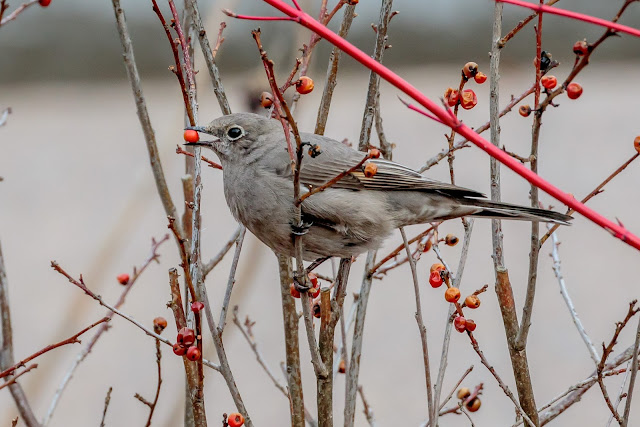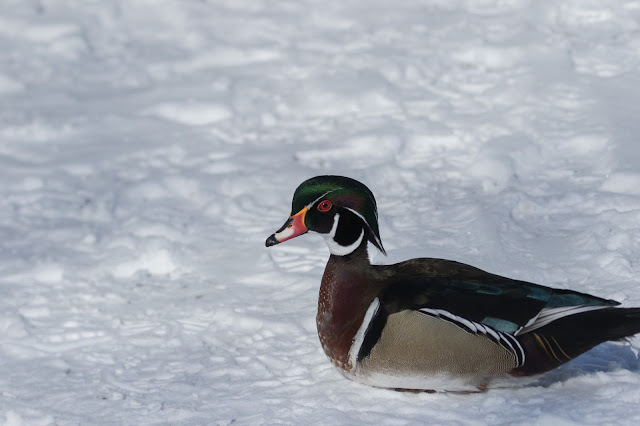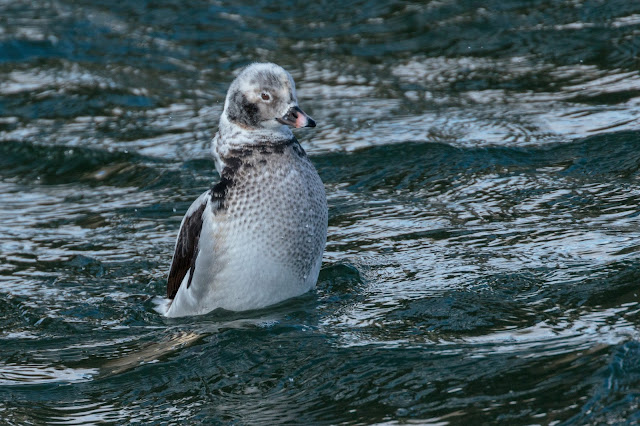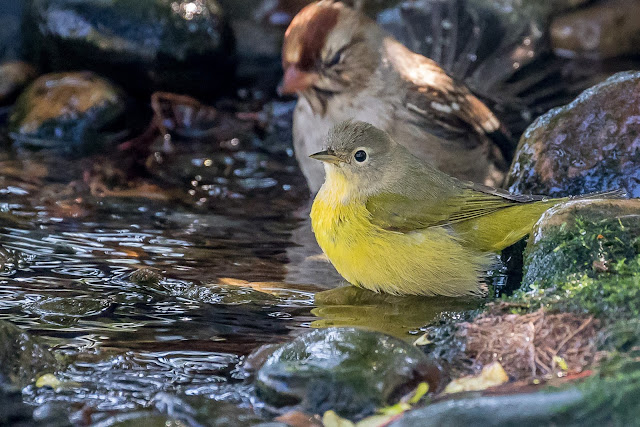We went down to Point Pelee today to look for the Townsend's Solitare that has been hanging around for about 2 weeks. At first we thought we were going to miss it as it had just left the immediate area. About 15 minutes later it came back and put on a nice show while feeding on berries. Myadestes townsendi If you ever thought that you liked berries, check out a Townsend's Solitaire's appetite. One study suggested they would need to eat between 42,000 and 84,000 juniper berries to survive the winter. Now that is a lot of berries. source -https://www.allaboutbirds.org/guide/Townsends_Solitaire/







